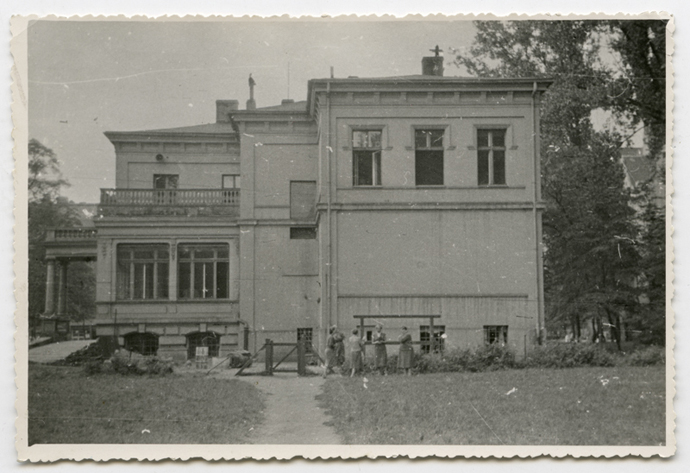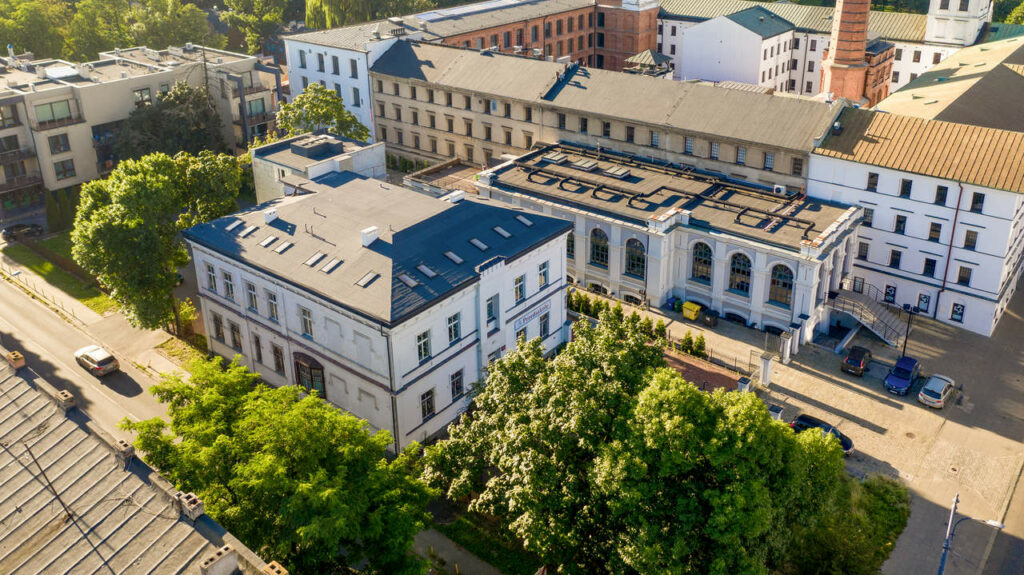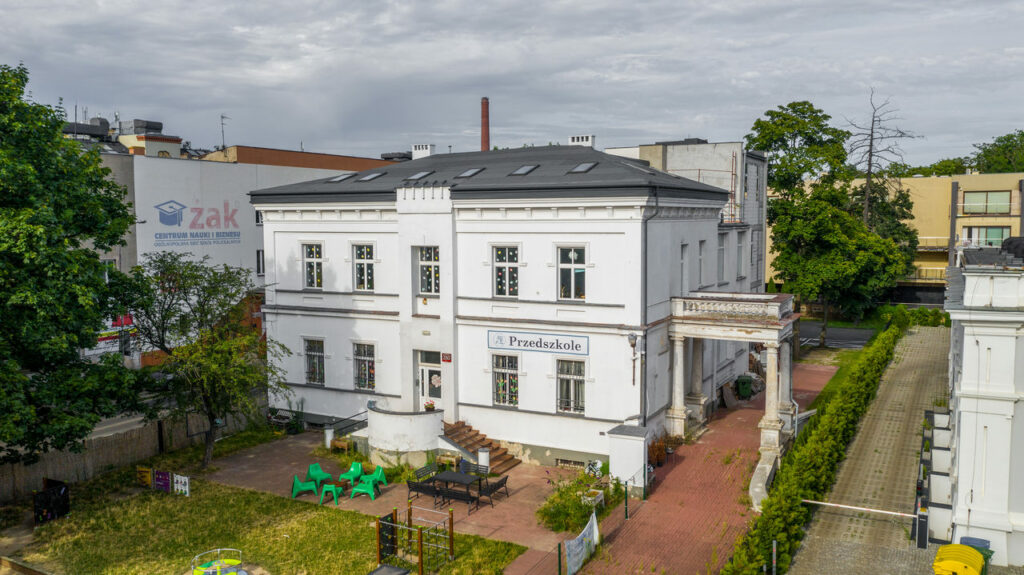Villa of Gustaw Geyer
Piotrkowska 280


The villa of Ludwik Geyer, located next to the White Factory, witnessed both joyful and tragic moments in the family’s history. The building, constructed around 1840, housed mechanical workshops: a metalworking shop, a turning shop and ironworks on the ground floor, and two carpentry shops on the first floor. During holidays and days off however, these halls would fill with laughter and the sound of music. Dance games and theatre group performances were held in a room with a wooden stage and gallery. For this reason, the villa was nicknamed the “Play House”. For a time, there was even a tap-room here. This was also where the Men’s Singing Association founded by Ludwik Geyer would hold its rehearsals.
In the 1870s, the noisy fun was replaced by quiet family life when Gustaw Geyer and his wife Helena started living there. The couple had nine children. Unfortunately, only six would reach adulthood. One of them was Robert Geyer, an entrepreneur, politician, social activist, and important player in the Polish economy during the interwar period. Even during WWI, he became involved in the activities of the Central Civic Committee, supported Polish soldiers and their families, as well as opposed German requisitions. After 1918, he devoted his efforts to the development of his family business as well as to building the Second Polish Republic after Poland regained statehood. He was involved with numerous local associations. He also held many public functions, being a member of the supreme council of the National Right Party, president of the Chamber of Industry and Commerce in Łódź, government plenipotentiary in matters of industry, and even honorary consul of Finland in Poland. After WWII began, Geyer quickly became involved in helping the prisoners of the Radogoszcz transit camp. When his cousin, Karol Geyer, was arrested, Robert demanded help from the military commander of Łódź. It cost him his life. Thought the exact circumstances are unclear, later that day, 12 December 1939, he was shot dead by the Gestapo in his house at Piotrkowska 280. His nephew, Gwido John, died as well – most likely killed in the villa garden while trying to escape the assailants.
Today, very little remains of the once-magnificent garden where this tragedy took place, as in the 1960s the area was taken up by Milionowa street. You can still see the well-preserved Neo-Renaissance villa with decorative balcony supported by columns from the factory side. Despite its numerous owners, some of the 1911 interior design work survives, including two Neoclassical marble fireplaces, decorative woodwork, and a stained glass window showing the White Factory and the first Geyer palace, dated 1829 – the only surviving piece produced before 1914 at the renowned S.G. Żeleński factory in Krakow.



